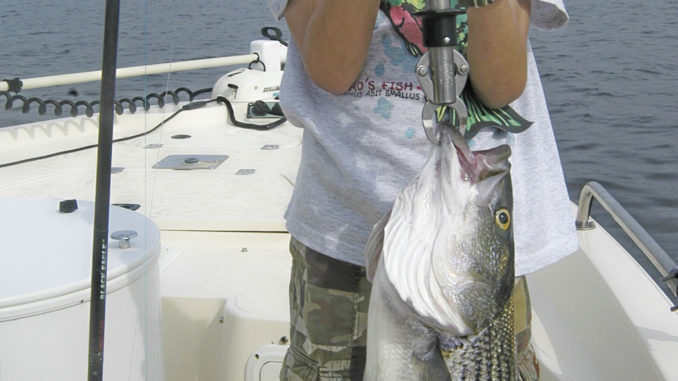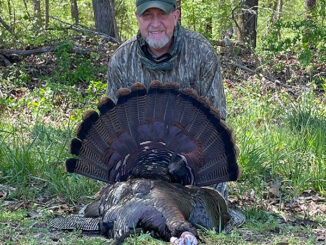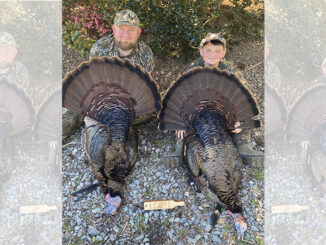
Jordan Lake kill included an estimated 7,000 fish, the NCWRC says.
Excessive, prolonged heat during July and August caused the largest single striped-bass kill in freshwater history in North Carolina at Jordan Lake, the North Carolina Wildlife Resources Commission confirmed.
Approximately 7,000 striped bass succumbed to the effects of extended 100-degree days, NCWRC District 5 fisheries biologist Corey Oakley said.
“Beginning in late July into the first two weeks of August, we began to see stripers floating, mainly in the main basin all the way to Robeson Creek,” Oakley said. “We visually counted 5,300 dead fish over a two-week period.
“(But) the actual number of dead fish is probably about 7,000, based on other fish kills and counts we have done in the past.”
Oakley said the fish simply couldn’t handle the stress of the heat, which caused water temperatures even many feet down to elevate.
“This year’s culprit was high water temperatures,” he said. “The water temperature from surface to about 20 feet in depth was greater than 84 degrees Fahrenheit.
“We actually had some readings during the height of the kill of 94 degrees Fahrenheit at depths of 2 to 3 feet. This is extremely warm for stripers, and is high even for Jordan Lake standards.”
Oakley said the actual cause of the deaths wasn’t the heat, but the effect the heat had on the fish had to be a major factor.
“It was really hot for a long time, and basically the stripers couldn’t eat enough food to maintain themselves and their weight,” Oakley said. “They couldn’t eat enough to overcome the metabolic demands of the high water temperature.
“They basically starved to death.”
During one stretch from mid-June to mid-August, the top 10 feet of the water in the relatively shallow lake had a temperature of 90 degrees, Oakley said.
“There was plenty of oxygen in Jordan Lake; it’s just that the heat really stressed out the stripers,” he said. “Lack of oxygen wasn’t a problem this year; it was strictly heat.”
Oakley called Jordan “a really shallow bath tub.”
“We couldn’t find any cold spots in the lake at all,” he said.
Striped bass prefer water that’s 55 to 68 degrees, but they are active in saltwater temperatures as low as 45 degrees.
“One problem is, we don’t have a lot of incoming fresh water this time of year,” Oakley said. “The Haw River is basically a ‘flash’ (downpour) system.”
He said bigger stripers are less able to withstand prolonged high water temperatures than smaller fish, and that most of the biggest stripers that succumbed topped out at about 14 pounds.
“They ranged from 2 to 14 pounds,” Oakley said, discounting rumors of dead 20-pounders, a size the lake has never produced.
“A 20-pound striper never has been seen at Jordan,” he said.
The lake record is 18 pounds, 8 ounces.
Oakley said there actually could be a upside to the kill, although the hot temps make everything a question mark.
“Often a thinning of the herd will allow the fish left behind to grow faster, but hot summers will impede these guys from getting large,” he said. “We can only pray for cooler summers and more rain.
“The kill has subsided, but could come back again if the water temps rise again. The fish are already stressed and struggling, and it won’t take much to put them over the edge again.”
The Commission plans to continue stocking its annual 70,000 fingerlings into Jordan Lake during the spring of 2012.
If you’re a Jordan Lake angler, let us know what you’ve seen by posting reports and photos about the kill on our fishing forum.
If you’re not already a NorthCarolinaSportsman.com member, it only takes a few moments to fill out the short registration form!





Be the first to comment